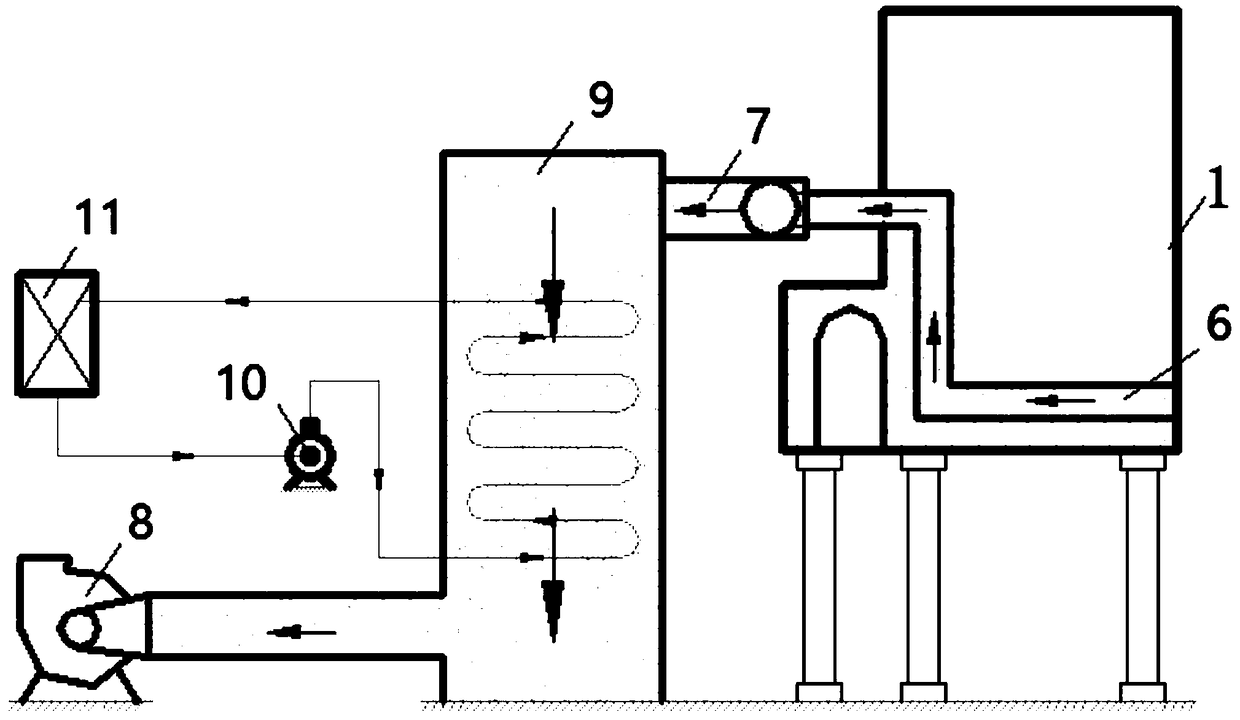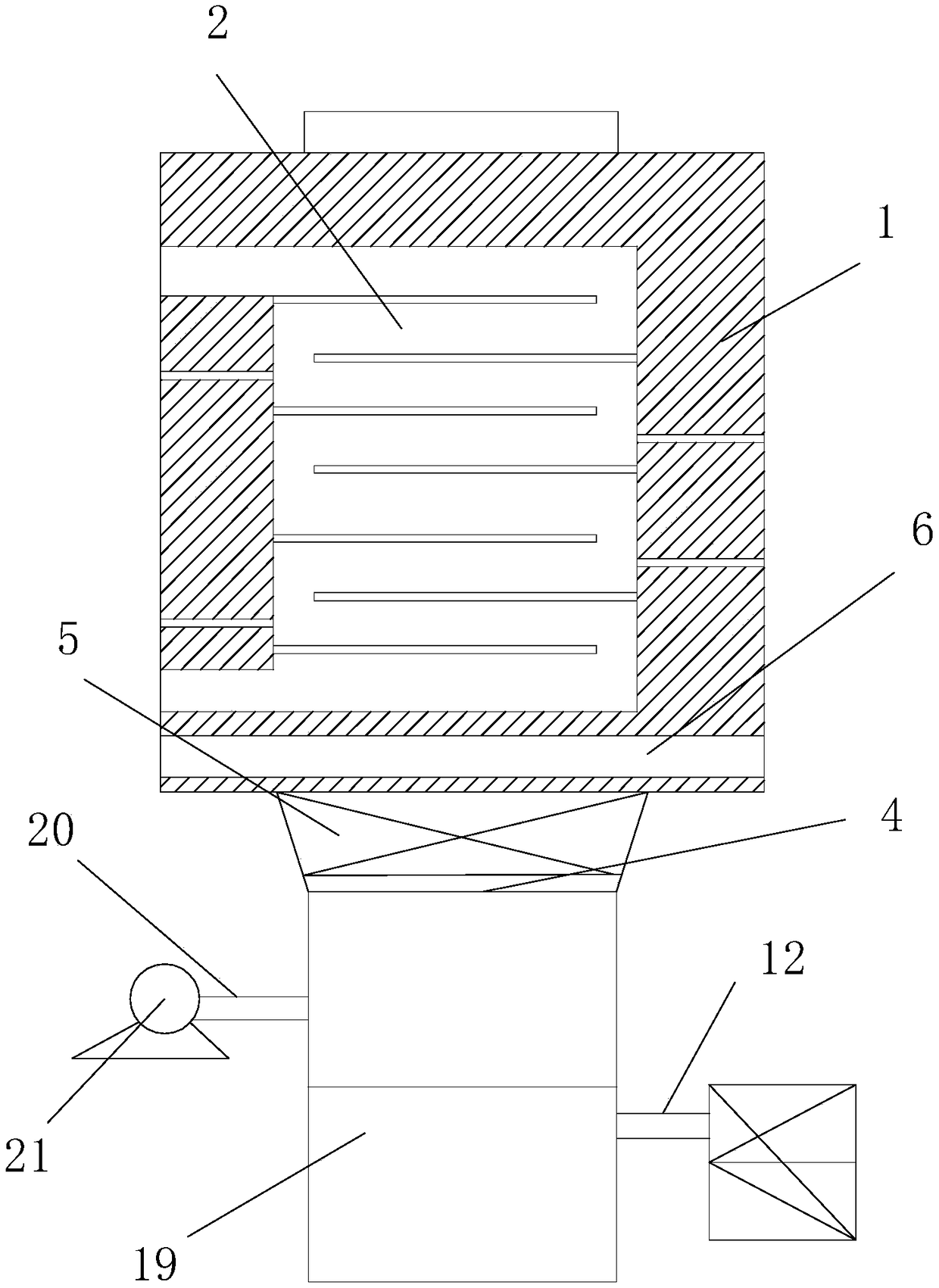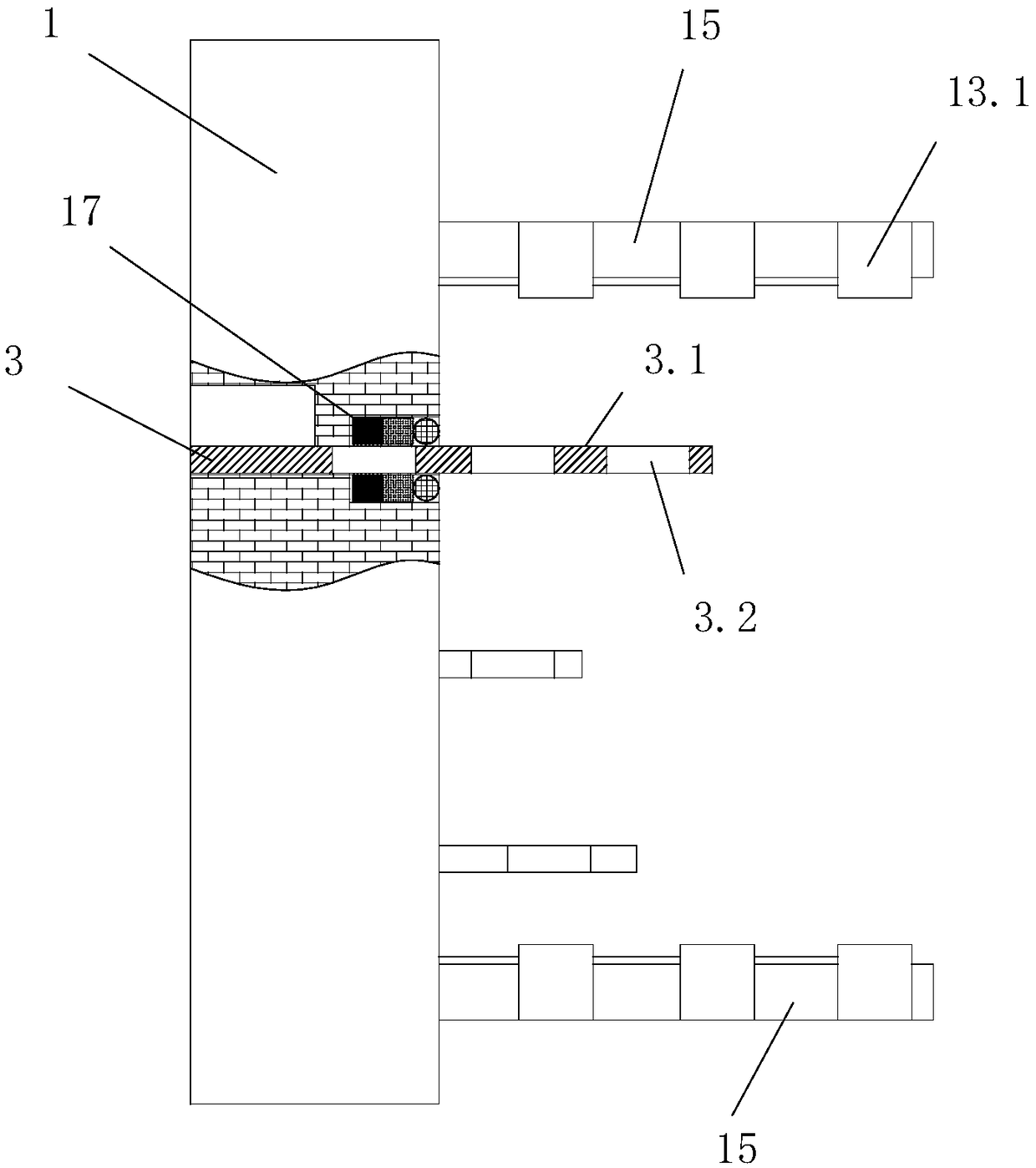Pot calciner system
A pot type calcining furnace, calcining furnace technology, applied in furnaces, crucible furnaces, furnace types, etc., can solve the problems of high discharge temperature of petroleum coke, limited cooling effect, and inability to mention high flow rate.
- Summary
- Abstract
- Description
- Claims
- Application Information
AI Technical Summary
Problems solved by technology
Method used
Image
Examples
Embodiment Construction
[0039] In order to enable those skilled in the art to better understand the technical solutions of the present invention, the present invention will be further described in detail below in conjunction with the accompanying drawings.
[0040] Such as Figure 1-8 As shown, a tank-type calciner system provided by an embodiment of the present invention includes a calciner body 1, and the calciner body 1 includes a calciner chamber and a multi-layer fire channel 2 arranged outside the calciner chamber. The furnace body 1 is also slidably connected with an adjusting pull plate 3, and the calcining chamber includes, from top to bottom, a feed port, a cavity body and a discharge port 4 in sequence, and a cooling water jacket 5 is arranged on the discharge port 4, A plurality of preheating air passages 6 are also arranged between the fire passage 2 and the cooling water jacket 5 on the bottom layer, and also include a collection pipe 7, an induced draft fan 8, a heat exchange boiler 9,...
PUM
 Login to View More
Login to View More Abstract
Description
Claims
Application Information
 Login to View More
Login to View More - R&D
- Intellectual Property
- Life Sciences
- Materials
- Tech Scout
- Unparalleled Data Quality
- Higher Quality Content
- 60% Fewer Hallucinations
Browse by: Latest US Patents, China's latest patents, Technical Efficacy Thesaurus, Application Domain, Technology Topic, Popular Technical Reports.
© 2025 PatSnap. All rights reserved.Legal|Privacy policy|Modern Slavery Act Transparency Statement|Sitemap|About US| Contact US: help@patsnap.com



